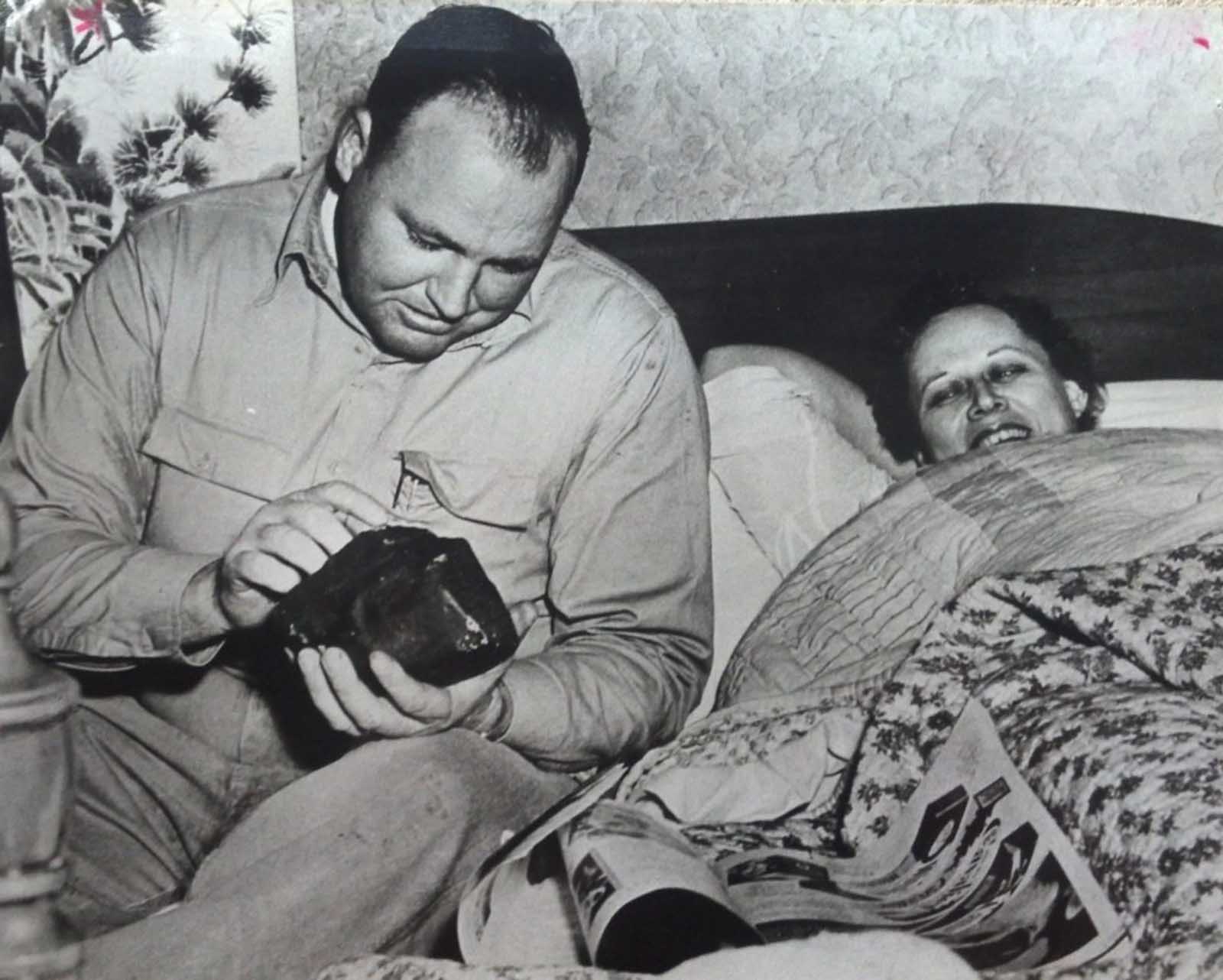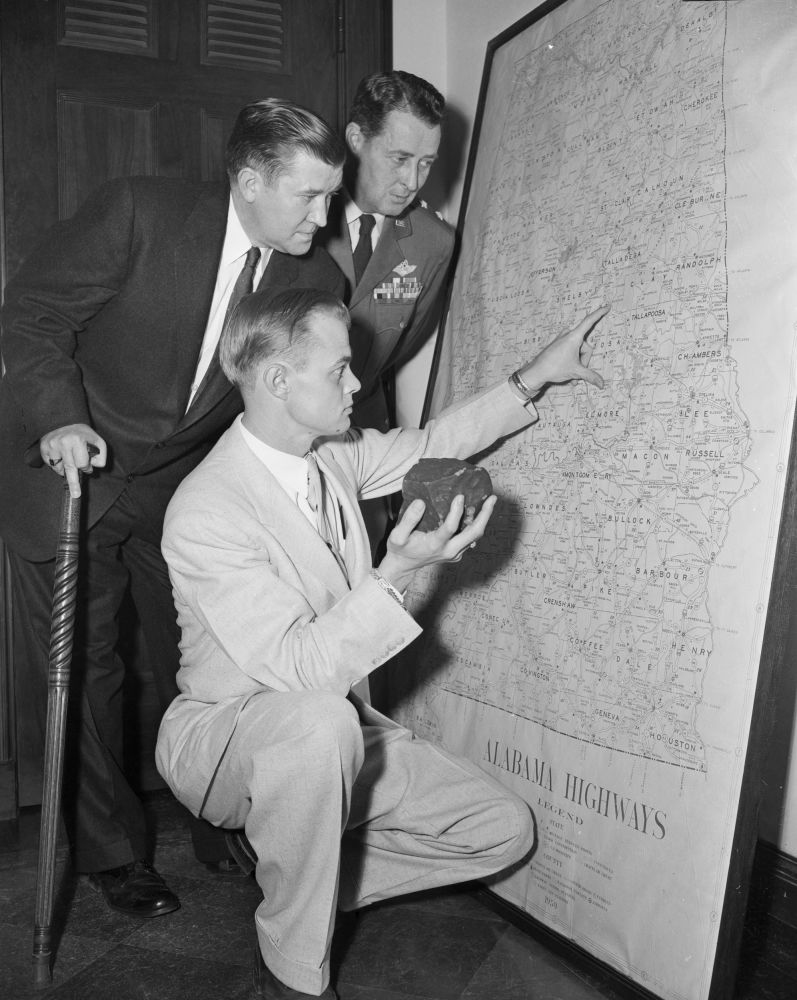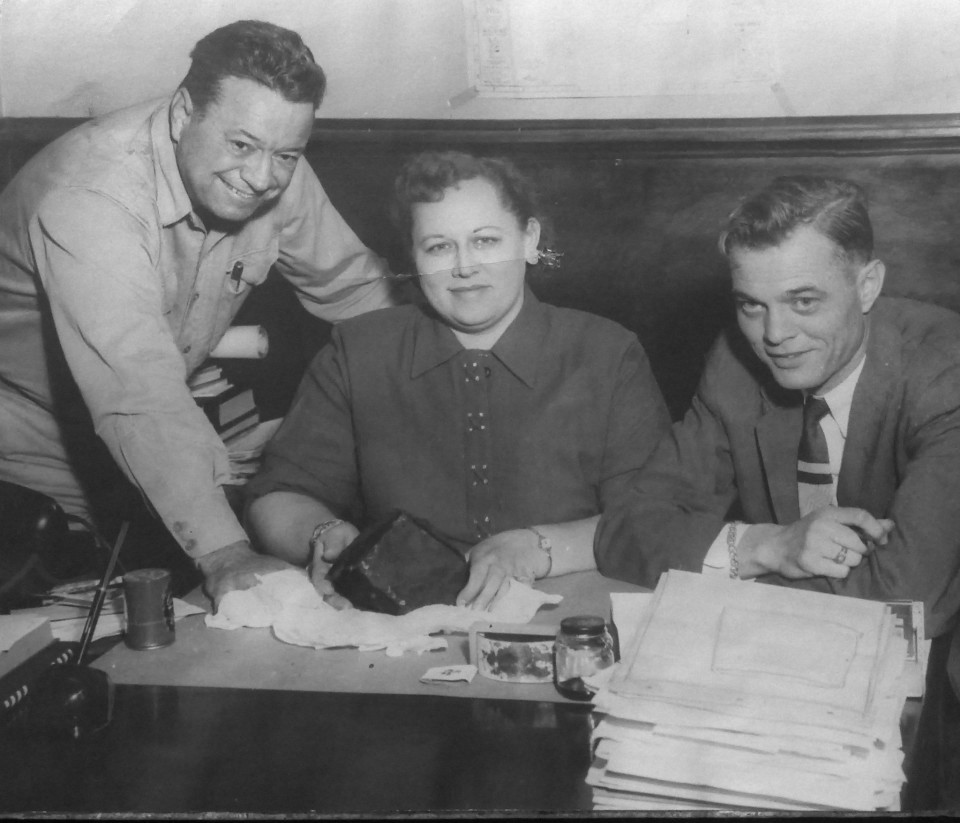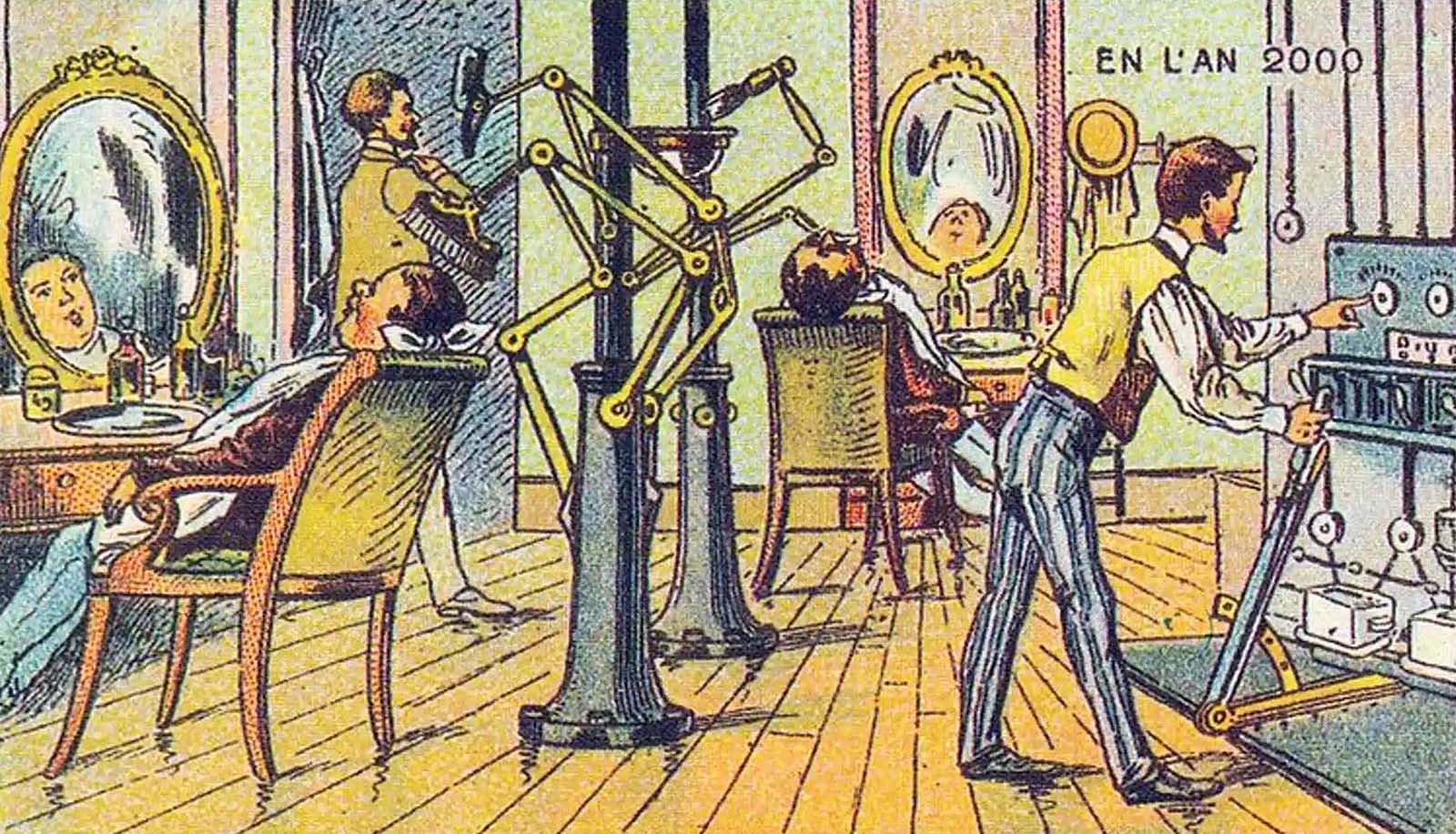Dr. Moody Jacobs shows a giant bruise on the side and hip of his patient, Ann Elizabeth Hodges, who had been struck by a meteorite while inside her home, 1954. The Sylacauga meteorite that hit Ann Hodges is the first documented extraterrestrial object to have injured a human being in the USA.
On a clear afternoon in Sylacauga, Alabama in 1954, Ann Hodges was napping on her couch, covered by quilts, when a softball-size hunk of black rock broke through the ceiling, bounced off a radio, and hit her in the thigh, leaving a pineapple-shaped bruise.
When she noticed a grapefruit-sized rock lying on the floor and a ragged hole in the roof, she assumed children were the culprits.
Her mother rushed outside and saw only a black cloud in the sky. Alabamians in and around the area saw the event from a different perspective, with many reporting that they had seen a fireball in the sky and heard a tremendous explosion that produced a white or brownish cloud. Most assumed it involved an airplane accident.
Ann was examined by physician Moody Jacobs, who determined that although her hip and hand were swollen and painful, there was no serious damage. (He later checked her into the hospital for several days to spare her from all the excitement).
A government geologist working in a nearby quarry was called to the scene and determined the object was a meteorite weighing 8.5 pounds and measuring seven inches in length.
The incident put 34-year-old Ann Elizabeth Hodges in the history books as the first documented case of a human struck by a meteorite.

The meteorite was confiscated by the Sylacauga police chief who then turned it over to the United States Air Force.
According to the official report: at 12:46 pm (CST) on November 30, 1954,[5] a meteorite fell through the skies of Sylacauga, Alabama.
It split into at least 3 fragments, with one of the fragments falling through a roof, hitting and bouncing off a radio, then landing on Mrs. Hodges who was napping on her couch.
She recalled the meteorite came through her roof around 2:00 pm local time, although the official time the meteorite flew through the sky was 12:46 pm.
Mrs. Hodges and her mother, who was in the house at the time, thought the chimney had collapsed as there was a lot of dust and debris. Once they noticed the large rock, they called both the police and fire department.
The meteorite was confiscated by the Sylacauga police chief who then turned it over to the United States Air Force. Both the Hodgeses and their landlord, Bertie Guy, claimed the rock, Guy’s claim being that it had fallen on her property.
There were offers of up to $5,000 for the meteorite. The Hodgeses and Bertie Guy settled, with the Hodgeses paying $500 for the rock.
However, by the time it was returned to the Hodgeses, over a year later, public attention had diminished, and they were unable to then find a buyer.

The meteorite damaged the ceiling of the home where Ann Elizabeth Hodges and her husband lived.
Eventually, Mrs. Hodges decided to sell the meteorite to the Alabama Museum of Natural History, against her husband’s wishes, and as he recalled, for about $25.
Probably the only major figure in the entire Sylacauga meteorite story to claim a satisfactory ending was Julius K. McKinney, a farmer who lived near the Hodges.
On December 1, 1954, the day after Ann Hodges was struck, he discovered a second fragment of the meteorite in the middle of a dirt road. McKinney was able to sell his rock to the Smithsonian for enough to purchase a small farm and a used car.

Hewlett Hodges, Ann Hodges’ husband at the time she was hit by the meteorite, “studying” the infamous rock.
Ann suffered a long nervous breakdown after all of the commotions had passed, and had to be hospitalized.
The breakdown took a toll on her relationship with her husband, and the couple was divorced in 1964. Just eight years later, Anne Hodges died in a Sylacaugan nursing home. She was only 52.

The Air Force on December 9th formally returned to Mrs. Hewlett Hodges the ten-pound meteorite which crashed into her Sylacuaga, Alabama, home on November 30th and hit her. Huel M. Love, Talladaga, Alabama, her attorney, holds the meteorite as he points to the town of Sylacauga on a map. Major General Joe W. Kelly (right) handed it over to Love in the office of Rep. Kenneth A Roberts (D-Ala.) (leaning on cane.)

The Hodges (via the University of Alabama Museum of Natural History).

The Hodges Meteorite is on display at the University of Alabama’s Natural History Museum.
(Photo credit: Smithsonian Museum / Wikimedia Commons).


